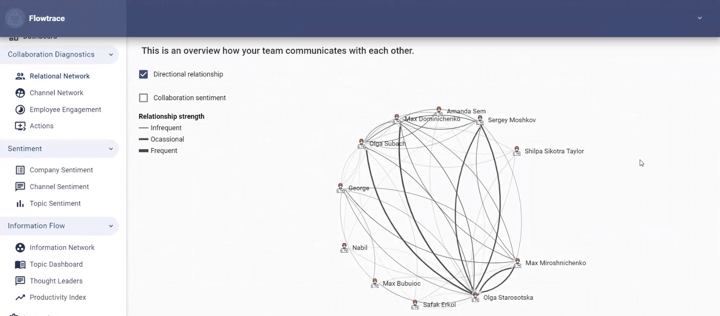We interviewed Olga Starosotska, entrepreneur and CEO of Monshare, an expense tracker app. In this part, we look at how Monshare used Flowtrace to manage time in a fully remote company across three continents.
In this part, Olga shares the delicate balancing act of time usage. She shares her tips and tricks how to get remote team aligned across the timezones among other things.
How do you organize your time?
So, every Thursday and Sunday, I only work on Monshare. (Editors note: the interview was on a Thursday – thanks for making the time!) It's hard even with a small company to get everyone culturally aligned, working in the same rhythm, and sharing information.
We align our teams every Sunday. We have for over a year. Through some trial and error, we've found it works for us, so it’s a sustainable way of doing things. Having that routine was really important for us so all the new employees had to get used to it too. People have different ways of working, some will do their work all in one go and then have a longer pause. Unfortunately, we couldn't have anyone be away for longer periods than a week or two because it would mess up our synchronized work cadence and the flow of information between team members. Our goals is a complete team alingment.
How have you set up your internal communication? How do you make sure information flows across timezones?
We are split across several timezones: London, New York, Ukraine, Russia. There are naturally problems aligning everyone and we don't want to spend time in endless meetings. I used to do a lot of consulting between different cultures, countries, and time zones. That meant a lot of meetings. What I learned was that if no one takes ownership of meetings you can spend an eternity in them with very little return on time investment. There is a meeting to put together a meeting. And another meeting to discuss the points of the previous meeting.
Productive meetings do not happen by accident.
Creating productive meetings is a full-time job. Improving productivity takes time. It doesn't happen by accident. If a meeting is productive, someone has taken ownership of it and made sure it is like that.
I see to it that there are never meetings where the agenda is not clear. The CEO fills in the gaps of internal comms and sees that information is flowing between team members. It’s my job to be that person who sees to it that things stay productive and that time is used wisely.
With Flowtrace, you can see the ‘connectors’ in a company, people who link teams together. What is their significance?
In an eight-person company, it is obvious who is and who isn't a bridge builder. There's a good and a bad side to this. Connectors facilitate communication. But if you take that person out of the organization and there is no one to take their place, the whole company will become paralyzed. It's really useful to be able to find out who these bridge builders are but also how I can decrease the company's reliance on them.
You want to increase the amount of bridge-building, not your reliance on specific bridge builders.
There should be more people who are natural connectors and dedicated people who can create more facilitation.
Has Flowtrace helped with time management? Especially with everything being remote?
Our communication with each other became more quantifiable and actionable. I also noticed some people were communicating too little.
 Normally, in a small organization working in an office, I would have an intuitive sense of how people are talking with each other. It would be obvious. Now with Covid-19, in the best days, we have the time to have real talks with a couple of people per day at most. There are clearly more blind spots.
Normally, in a small organization working in an office, I would have an intuitive sense of how people are talking with each other. It would be obvious. Now with Covid-19, in the best days, we have the time to have real talks with a couple of people per day at most. There are clearly more blind spots.
I’ll gladly admit I'm an introvert, more comfortable hiding behind a screen and I'll do that for as long as the situation doesn’t require coming out of my shell. As a CEO, I have to get out of that comfort zone. But other introverts, who are less comfortable reaching out, might need support, someone to suggest that you should maybe contact this person. With Flowtrace, you can see if someone in the team is getting isolated and help them by kicking off a conversation between the people who should be more connected.
This is Part 2 of a 4-part interview. Read all of Olga’s Startup Story and how Flowtrace helped Monshare with different organizational challenges.
Growth of a Remote Startup with Flowtrace I: How to Build a Team
Growth of a Remote Startup with Flowtrace II: How to Manage Time (current article)
Growth of a Remote Startup with Flowtrace III: How to Lead with Culture
Growth of a Remote Startup with Flowtrace IV: Communication Priorities